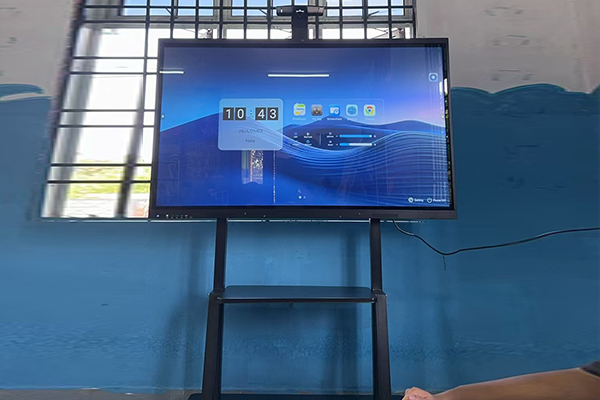Why are electronic whiteboards becoming more and more popular in schools and companies
Why are electronic whiteboards becoming more and more popular in schools and companies?
As an iconic tool in the digital age, electronic whiteboards are creating a wave of applications in educational institutions and enterprises around the world. According to FutureSource Consulting, the global electronic whiteboard market will reach $2.6 billion in 2022 and is expected to exceed $3.6 billion in 2026. Behind this exponential growth, digital technology has reshaped traditional teaching and work models in a disruptive way. Electronic whiteboards not only realize the conversion of physical blackboards to digital information, but also build a multi-dimensional collaborative space, becoming a core node for promoting the digital transformation of organizations.
1. Educational scenarios: Reconstructing the three-dimensional dimension of knowledge transfer
In a physics class at a key middle school in Beijing, teachers visualize electromagnetic fields through 3D modeling functions, and students use tablets to mark the direction of electric field lines on electronic whiteboards, and wrong trajectories display red warnings in real time. This dynamic interaction makes abstract concepts concrete. According to the school's teaching evaluation, after using electronic whiteboards, students' spatial imagination ability test scores increased by 27%.
The ability to integrate educational resources is another advantage of electronic whiteboards. Teachers at Shenzhen Nanshan Foreign Language School can retrieve high-quality lesson examples from the past five years on the cloud, drag and drop experimental videos of Harvard University's open courses to courseware, and the AI annotation system can instantly analyze students' problem-solving ideas. This cross-temporal and spatial resource integration has increased lesson preparation efficiency by 40%, and the utilization rate of teaching resources has jumped from 35% to 82%.
2.Emergency practices during the epidemic have highlighted the strategic value of electronic whiteboards. During the lockdown period, a middle school in Wuhan used the remote collaboration function of the smart whiteboard to enable teachers to write derivation formulas at home, and the students' end simultaneously displayed the problem-solving process. The classroom interaction rate remained at 91%, which was 3 times higher than that of traditional online classes.
When Microsoft Surface Hub, MAXHUB and other products evolve the electronic whiteboard into a smart terminal hub, its value has surpassed the tool itself. The education field is forming an OMO teaching model of "whiteboard + cloud platform + terminal device", and the business community is building an intelligent closed loop of "digital whiteboard-business system-decision-making center".


